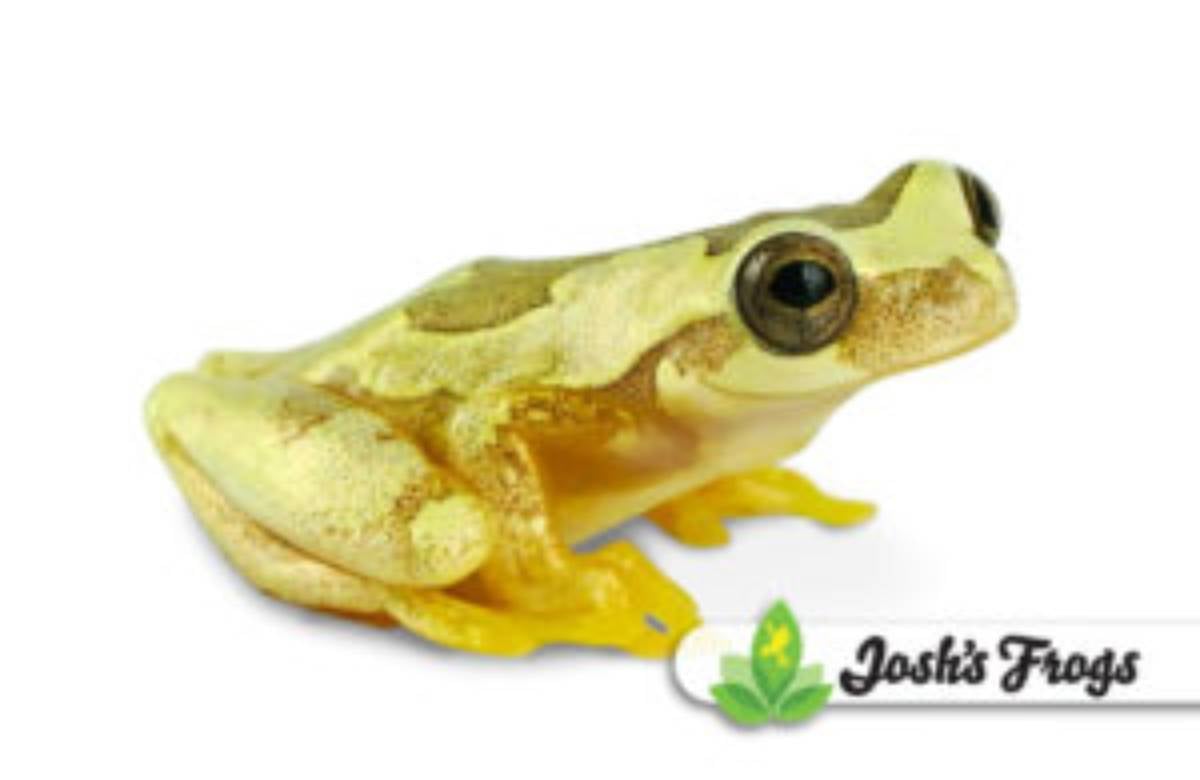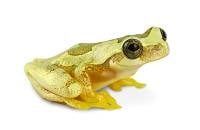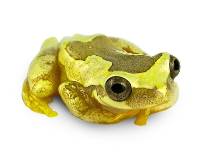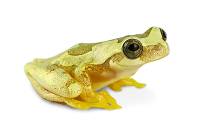Josh's Frogs
Hourglass Tree Frog Care Sheet
Have you been on the hunt for a small tree frog? Hourglass Tree Frogs are tiny, bright, and guaranteed to add a little sunshine to a vivarium! Below we outline the care needed to keep these little guys happy and healthy.


 [divider_top]
[divider_top]

Defining Characteristics
- Intermediate skill level needed
- Somewhat shy personality
- Moderate level of involvement in care
- 1”-1.5” size
- Quiet “whee” call
- Light brown hourglass shape on back surrounded by golden yellow markings
- Good in groups
- Egg deposition on leaves above the water’s surface
Name
Dendropsophus ebraccatus. Common Name(s): Hourglass tree frog or Pantsless tree frog.Recommended Vivarium Size
Adult Hourglass tree frogs should be kept in at least an 18x18x18 front opening tank or 20 gallon enclosure, but would appreciate more vertical space. N ewly morphed froglets (young frogs) can be kept temporarily in an 12x12x18 front opening tanks or a 10 gallon. Vivariums should be heavily planted with leaves for perching and hiding in. Branches should also be supplied to increase overall climbing surfaces for the frogs.Temperature
Keep the vivarium between 72° and 78° degrees at all times. Monitor the internal temperature of the vivariums using a thermometer to make sure the frogs are comfortable.Humidity
Keep the humidity between 50-70% to ensure the frogs are staying moist. Monitor the humidity levels using a hygrometer. Misting frequently will help keep the humidity up throughout the day. If you find that you need to mist more frequently then you're able too, try an automatic misting system. These tree frogs also like air flow. Be sure to have an area of ventilation on your terrarium. Stagnant air can lead to bacterial infections.Size
Hourglass tree frogs are sexually dimorphic, meaning the females are larger than the males. Males hover around the ¾” range and Females can reach 1 1/2"" in length.Age
Hourglass Tree frogs can live for 5-8 years in captivity, but may live longer with ideal care. In their natural habitat these frogs can live between 4-5 years.Feeding
Being on the small side, Hourglass tree frogs should be fed ¼” crickets as adults.Sexing
Hourglass Tree Frogs are fairly easy to sex as adults. Females are much larger than males, with a wider and more stout head. Females will be about 1"" longer than males, and are easily 50% heavier.All Hourglass Tree Frog froglets sold by Josh's Frogs are unsexable due to their young age.Color/Pattern
Hourglass tree frogs are known for their hourglass shape on their backs. Apart from this light brown patch, most individuals are a golden yellow with brown blotches present on the legs and elsewhere on the back.
Social Behavior
Hourglass tree frogs will compete for mates but will live fairly peacefully with other Hourglass tree frogs.Breeding
Male Hourglass tree frogs will call to attract females during the rainy season. After amplexus females will deposit eggs on vegetation either above the water or on vegetation that is just below the surface. The hourglass tree frogs are the only know frog to be able to breed in and out of the water!Tadpoles
Tadpoles should be kept in an aquarium with tannin rich water that has been cycled. This can be done using Indian Almond Leaves steeped in RO (reverse osmosis) water. Tadpoles will readily eat a variety of fish foods and/or Josh’s Frogs Tree Frog & Toad Tadpole Food. Sponge filters should be placed in the tank and no more than 50% of the water replaced during water changes.Development
Eggs develop into tadpoles over the course of 5-10 days. Tadpoles can morph into frogs in as little as 6 weeks.Natural Range
Belize, Colombia, Costa Rica, Ecuador, Guatemala, Honduras, Mexico, Nicaragua, Panama . ( IUCN red list )[button-green url="https://new.joshsfrogs.com/p/hourglass-tree-frog-dendropsophus-ebraccatus-cbp-cbptree023" target="""" position="center"]Buy an Hourglass Tree Frog[/button-green] About the Author: [divider_top]
[divider_top] 




